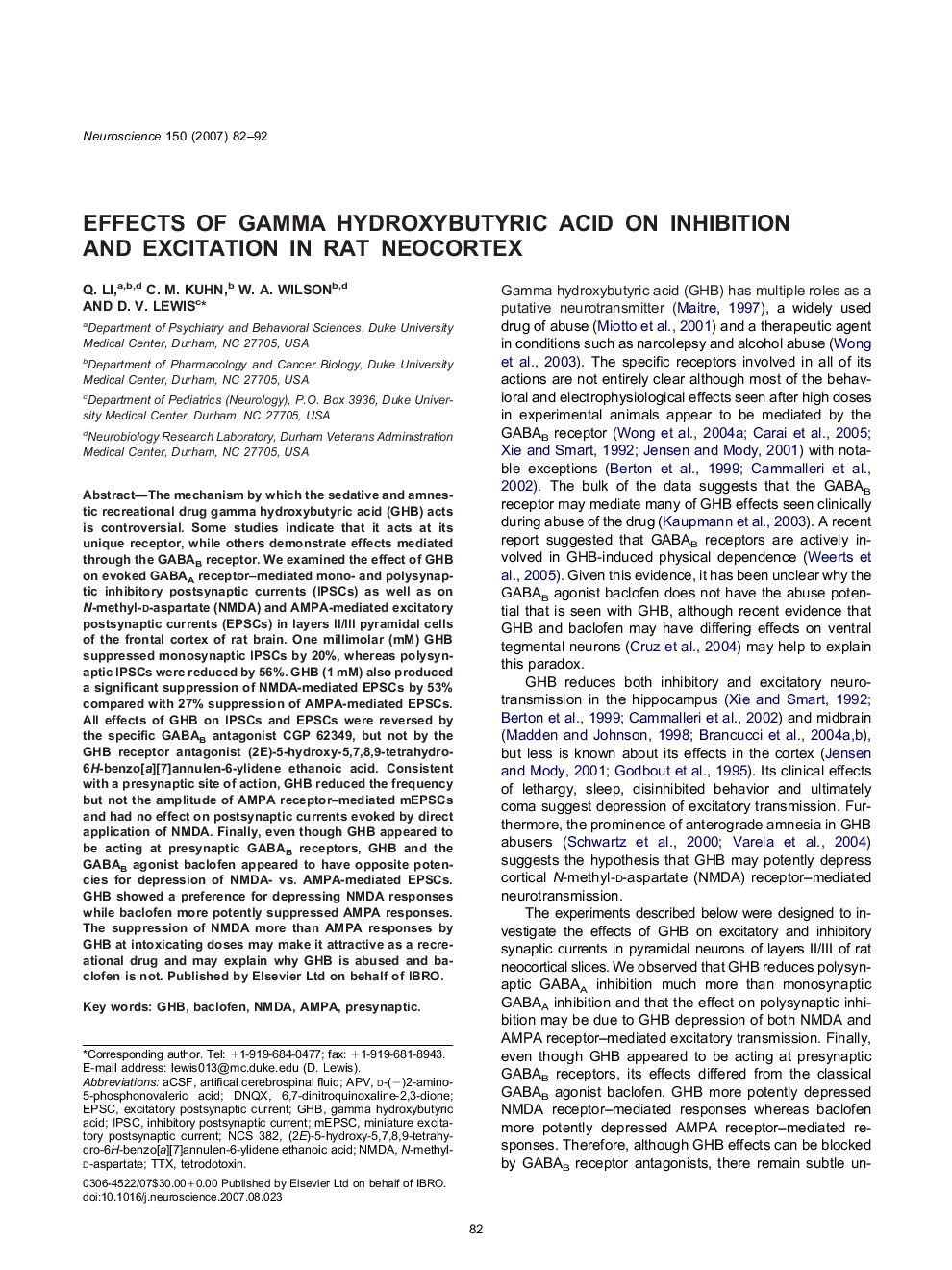| Article ID | Journal | Published Year | Pages | File Type |
|---|---|---|---|---|
| 4341178 | Neuroscience | 2007 | 11 Pages |
Abstract
The mechanism by which the sedative and amnestic recreational drug gamma hydroxybutyric acid (GHB) acts is controversial. Some studies indicate that it acts at its unique receptor, while others demonstrate effects mediated through the GABAB receptor. We examined the effect of GHB on evoked GABAA receptor-mediated mono- and polysynaptic inhibitory postsynaptic currents (IPSCs) as well as on N-methyl-d-aspartate (NMDA) and AMPA-mediated excitatory postsynaptic currents (EPSCs) in layers II/III pyramidal cells of the frontal cortex of rat brain. One millimolar (mM) GHB suppressed monosynaptic IPSCs by 20%, whereas polysynaptic IPSCs were reduced by 56%. GHB (1 mM) also produced a significant suppression of NMDA-mediated EPSCs by 53% compared with 27% suppression of AMPA-mediated EPSCs. All effects of GHB on IPSCs and EPSCs were reversed by the specific GABAB antagonist CGP 62349, but not by the GHB receptor antagonist (2E)-5-hydroxy-5,7,8,9-tetrahydro-6H-benzo[a][7]annulen-6-ylidene ethanoic acid. Consistent with a presynaptic site of action, GHB reduced the frequency but not the amplitude of AMPA receptor-mediated mEPSCs and had no effect on postsynaptic currents evoked by direct application of NMDA. Finally, even though GHB appeared to be acting at presynaptic GABAB receptors, GHB and the GABAB agonist baclofen appeared to have opposite potencies for depression of NMDA- vs. AMPA-mediated EPSCs. GHB showed a preference for depressing NMDA responses while baclofen more potently suppressed AMPA responses. The suppression of NMDA more than AMPA responses by GHB at intoxicating doses may make it attractive as a recreational drug and may explain why GHB is abused and baclofen is not.
Keywords
Related Topics
Life Sciences
Neuroscience
Neuroscience (General)
Authors
Q. Li, C.M. Kuhn, W.A. Wilson, D.V. Lewis,
